In the shadow of the Napoleonic era. Mediterranean Expedition of Admiral Senyavin
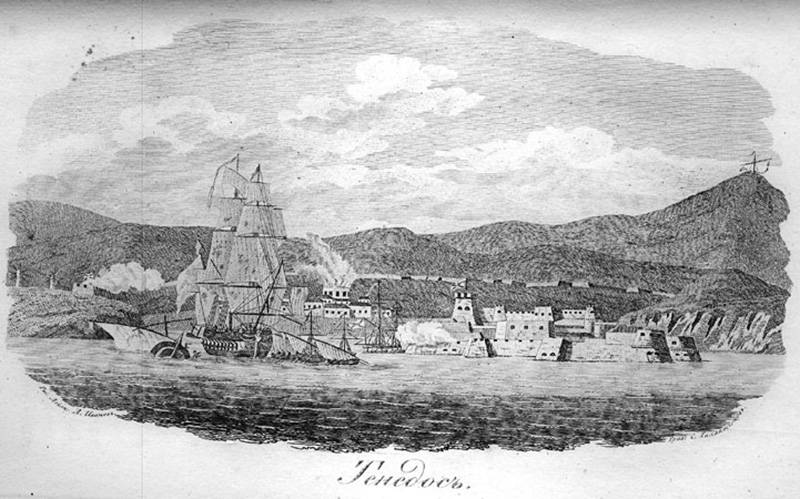
Russian-Turkish war 1806 – 1812 In many ways, it was a derivative of the large-scale political processes that took place in this period in Europe. The echo of Austerlitz thundered not only in the palaces of St. Petersburg and Vienna - it was clearly audible even on the distant shores of the Bosphorus. The Ottoman Empire, feeling the impact on the events of the new force, decided to take advantage of a convenient moment and take revenge on the old offender. In the context of the ongoing war with Russia, France made considerable efforts to stir up revanchist sentiments among the Turks. All this in aggregate: the fruitful activities of the energetic ambassador Sebastiani, the spirit of the Turkish leadership, the passivity of Russian and formally allied British diplomacy — led eventually to an inevitable war.
Another military conflict began for Russia in very unfavorable conditions, when the main forces of the empire were involved in the struggle against Napoleonic France. The most important factor was the naval component, which had a significant impact on the situation within the Ottoman Empire in the first period of the war.
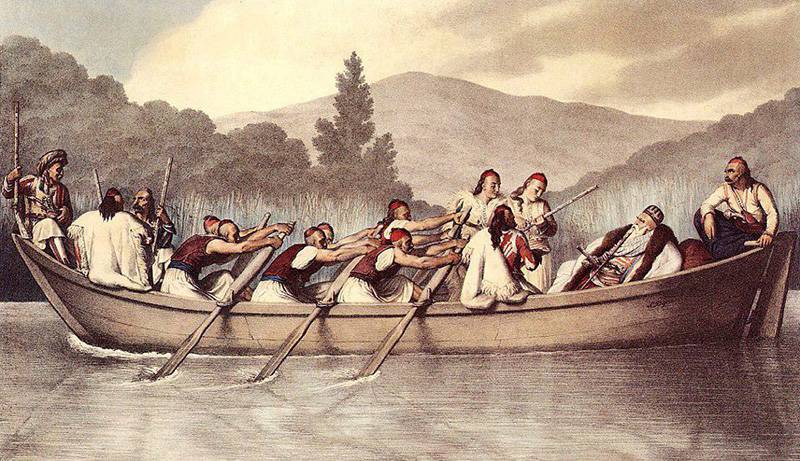
The Russian squadron under the command of Admiral Senyavin, operating in the Mediterranean within the framework of the Third Anti-French Coalition, proved to be the most effective tool for influencing the enemy at sea. The thickening of clouds and the fall of the barometer in relations with the Brilliant Porte began to be felt already in the autumn of 1806. Leaving a detachment of ships under the command of captain-commander Ilya Andreyevich Baratynsky in the Adriatic, Senyavin went to Corfu island with the main forces, as there was information that Ali Pasha Yaninsky, instigated by French emissaries, had his eyes and teeth on the Ionian Islands. The power of the Sultan in the Ottoman Empire often became smaller as the distance from the capital increased, and many regions were governed on the basis of the pragmatic principle “Allah is highly - padishah far”. Formally, Russia and Turkey were not at war, but Ali Tibelin was not opposed to warm up.
On Corfu, Senyavin found out that this local ruler was concentrating troops in Albania, detaining food ships going to the Ionian Islands, and all his activities are already quite far from friendly neutral and approaching hostility. In order not to force the situation, Senyavin wrote a letter to Ali Pasha, where in very polite expressions he expressed his concern about his studies, and also at least politely made it clear what measures could be taken and what could follow if this letter was misinterpreted. Ali Pasha was a husband, not devoid of ingenuity, and in a return message to the Russian admiral in true Eastern expressions, he expressed his most sincere peaceful intentions. The words of the clever governor, naturally, were not worth even a snob of sour pilaf, especially since the rumors from Istanbul were increasingly losing their touching tranquility.
Soon, Senyavin received a weighty and equally large instruction manual from St. Petersburg signed by the Minister of Sea Chichagov for the event of a war with Turkey. The Russian squadron was ordered to elect Istanbul, the core of the Ottoman Empire, as its main objective. At the same time, the document was simply cluttered with secondary tasks, like the Northern Sea Route, with ice. In addition to his main goal, Senyavin was to capture several islands of the Archipelago, including Rhodes, to carry out the blockade of Egypt, to prevent sea communication between Turkey and France, to send several ships to Sicily to support the distressed Neapolitan king. In addition, the squadron was supposed to protect the Ionian Islands. In fact, this instruction, which is located in very remote empireas from the real state of affairs, was not feasible. It was only in St. Petersburg that Senyavin believed to command a group comparable in strength to at least Invincible Armada.
Another dubious taste the highlight of the instructions was that it did not indicate either the date or even the period when the Russian squadron needed to approach the Dardanelles. Senyavin no longer waited for any instructions and regulations that could only exacerbate the situation, but by accepting supplies, went to sea in early February 1807, towards Istanbul. War by this time has already been declared. The resources of the actual Ionian Islands were rather limited, in order to fully supply with everything necessary both the Russian ships and the troops stationed there. Since Senyavin was actually cut off from his homeland, and most of the Mediterranean coast was at the mercy of the enemy, the question of logistics was resolved in a direct and uncompromising way. Almost every merchant ship encountered by the Russians belonged to the enemy and, of course, was declared a prize. By order of Senyavin, all captured ships and smuggled goods of neutral "merchants" went on sale. Three eighths of the amount received were distributed among the officers and sailors of the ship that took the prize. The remaining five eighths - between the remaining ships of the squadron. The system was such that all personnel received, in one way or another, a monetary reward. Thus, the problems were solved not only of salary payments to officers and sailors, but also purchases of supplies and other necessary supplies. The hostile waters of the Mediterranean were very fruitful for trophies. Thus, the frigate Venus, operating in the area of Venice and Trieste, took prizes in the amount exceeded for 100 thousand rubles.
February 10 (hereafter, the dates according to Art. Art.) 1807 of Senyavin left the Ionian Islands, having at its disposal 10 battleships, 1 sloop and several smaller ships. On the ships there was a landing: 1700 soldiers of the Kozlovsky Musketeer Regiment and about 300 shooters from the local population. Three battleships and a frigate were left in the Bay of Kotor to ensure the protection of this area from the sea. Corfu was based on one battleship and frigate left for the defense of the Ionian Islands. Before the departure of the Russian squadron to Senyavin, a deputation from the population appeared, which presented the admiral with a sign of concern "about safety, food and the welfare of the people" a golden sword and a diamond studded with diamonds. And this event was not at all a duty act of "giving gifts." Russia was treated well in the Ionian Islands.
February 15 Russian squadron stopped at the island of Idros, where the local population gave her an enthusiastic reception. The Greeks at their own expense equipped several small ships that joined the Russians as scouts. Replenishment of water and food is also not difficult.
At the entrance to the Dardanelles. Unsuccessful breakthrough of admiral duckworth
On February 23, the outpost of the Russian battleships saw the island of Tenedos, where a squadron of seven battleships was discovered. This turned out to be the English compound of Vice Admiral John Thomas Duckworth. The British were not at their best - they had holes and signs of damage. Soon it became clear their reason.
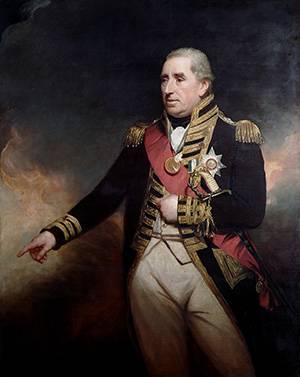
The fact is that at the end of 1806, Senyavin entered into official correspondence with the commander of the English fleet in the Mediterranean basin by Admiral Cuthbert Collingwood, proposing to jointly conduct an operation to force the Dardanelles fortifications. Collingwood was not opposed to this idea, but in the phase of determining the sensitive issue of the high command, a hitch arose, which turned into a long pause. The British themselves wanted to eat all the biscuits from the table: to seize the Turkish capital and neutralize, but it is better to capture the Ottoman fleet. The British were not going to share their promising successes (and the "enlightened sailors" had no doubts about their victory). The maximum that Sir Collingwood was ready to be generous with was the joining of his forces by a small detachment of Russian ships in the wings. But Senyavin categorically did not agree to such a situation, who quite rightly considered himself a worthy commander in chief. In the end, the parties did not agree, and the British recklessly decided to act without the Russians.
7 February 1807, by order of Collingwood, the squadron of Vice Admiral Dakworth composed of 7 battleships, 3 frigates and 2 bombarding ships entered Dardanelles. On it was the English envoy Charles Arbatnot, who had already left the Turkish capital. The coastal battery fire was weak and disorganized, and destroying several of the Turkish ships on the way, the Duckworth 9 of February, came to Istanbul on the way. The view of the English squadron did not embarrass the Turks, besides there was a calm. While the British ambassador was transferring with his French counterpart General Sebastian diplomatic shells in writing, the Turks, under the guidance of French engineers, hastily strengthened Istanbul and the Dardanelles. Diplomats sneak through the labyrinths of the epistolary genre, and the Ottomans, meanwhile, deployed more than a hundred cannons and mortars on the shores of their capital. Duckworth did not dare to land the troops, but considered it good to leave the inhospitable waters of the Sea of Marmara. 19 February, the British raised, finally, the sails, taking instead of submission of the Turks a pile of French newspapers with caustic articles sent to ridicule by enterprising Sebastiani. A small detachment of a midshipman and sailors, sent on a boat for provisions to the shore and captured by the Turks, was actually left to fend for themselves.
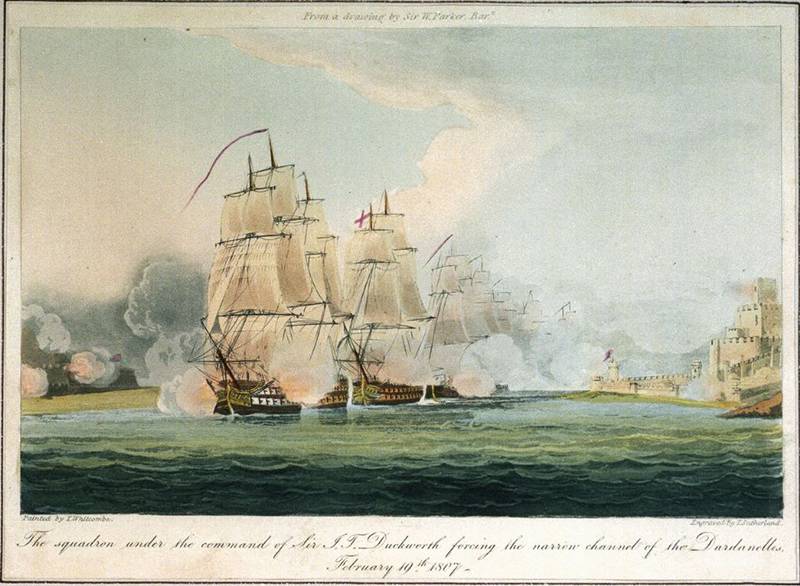
At the exit, Duckworth was waiting for a much more organized and, most importantly, warm reception. The British ships were heavily shelled by coastal batteries. It didn’t do without Oriental souvenirs: a marble core in 25 inches (635 mm), made of 15th-century antique Dardanelles cannon, pierced the bottom deck of the Windsor Castle ship and ignited the powder for the charges. The explosion killed 46 people. Another similar core fell into the battleship "Active", having done a huge hole above the waterline. Breaking through the Dardanelles cost the British almost 200 people killed and 412 wounded. Almost all the ships were largely damaged.
Senyavin proposed to his English colleague to repeat the attack of the Dardanelles by joint forces, and although, in the opinion of the Russian admiral, the Turkish capital could hardly be taken without large landing forces, it was quite possible to destroy the enemy fleet and bombard Istanbul, causing fires and destruction in the city. However, Duckworth was in a state of mind, very far from fighting, and was more concerned about the probable proceedings in the Admiralty than a breakthrough through the fortified straits. The British admiral also refused to provide at least some of his ships to Senyavin. 1 March 1807 Baronet Duckworth went to Malta to repair the damage. Left without an ally, albeit of dubious loyalty and utility, Senyavin set about implementing his own plans and plans.
Capture of the Tenedos
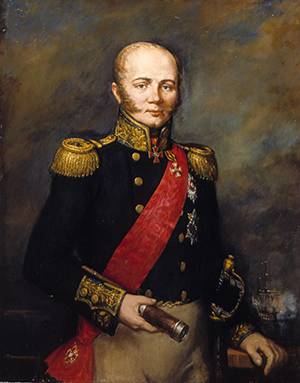
Since Dmitry Nikolaevich was going to make the squadron entrusted to him not momentary, but a long-term source of concern for the Istanbul leadership, he first of all attended to the creation of an operational base for his ships. The most suitable for this role was the island of Tenedos, located in 12 miles from the entrance to the Dardanelles. Rear Admiral Alexey Samuilovich Greig was sent to Tenedos with the battleship Raphael and Retvizan and the frigate Venus. The numerous vents of guns, while still silently gazing at the fortress of Tenedos and the fortress of Tabia, should have greatly influenced the prudence of the Turkish commandant. However, the offer to surrender Tenedos was categorically denied, and all the admonitions that continued on March 2 and March 3 were not very effective.
Then it was decided to use force. Almost the entire Russian squadron approached the island. On March 8, the “Powerful” battleship and the frigate “Venus” opened fire on enemy fortifications. Soon, a landing force from 1600 people was landed, which included both soldiers of the Kozlovsky regiment and crew members. Senyavin himself also appeared on the island for direct leadership. The next day, the Russians built four cannon siege batteries and launched a bombardment. The attack on the fortress was led personally by Senyavin. The Turks left the fort Tabiyah and other fortifications and were driven into the fortress. 10 March was a truce with a proposal to start negotiations on the surrender. 11 number Tenedos was completely cleared - his capture cost the Russian squadron in 4 a man killed and almost 100 injured. The losses of the Turks were much more significant: about 200 killed and as many wounded. 79 guns became the loot of the attackers. Found in the fortress significant reserves of food Senyavin ordered to distribute to local residents. The 1,2 Turkish garrison with thousands of men and 400 women and children were released on parole to not take part in further hostilities.
Blockade of the dardanelles
Thus, acquiring a base, the Russian squadron was able to proceed to a tight blockade of the Dardanelles. This process was facilitated by the growing number of Greek light ships in possession of Senyavin, whose functions included reconnaissance and interception of small prey. The supply of food in Istanbul began to falter. Initially, the Turks tried to organize a bypass route: transport and merchant ships entered the Gulf of Sarossa, where cargo was transported to the shore, and then the horse-drawn transport was already in progress. However, Senyavin soon deprived the enemy of this opportunity, sending to the gulf the Greek corsairs, reinforced by one frigate.
Though far from understanding the laws of a great strategy, the sharp-witted population of the Turkish capital is increasingly grumbling. He knew that the fleet of Kapudan-Pasha was in weary idleness in the basin of the Sea of Marmara, and the prices of bread and other products shot up above the mainmast of his flagship. The dissatisfaction of the padishah subjects grew wider and began to penetrate even through the high walls of Topkapi. And, as has often happened, and more will happen in storieswhen one fleet is boldly daring in mind of another fleet, which cautiously draws its head into its shoulders, the opinion of society and the authorities coincided surprisingly: it is necessary to go to sea and fight. It cannot be said that the Turks were stolidly watched and inactive, looking at how Senyavin more and more carefully clogs the Dardanelles. On the Anatolian coast, opposite Tenedos, troops were concentrated in order to recapture the island, however, as long as the Russian squadron operated freely in the local waters, there could be no question of any landing party. The pause in the current situation was delayed, and Senyavin, who wanted to fight no less than the population of increasingly starving Istanbul, decided to stimulate his opponent, forcing that at last to crawl out of the “hole” of the Sea of Marmara.
On March 19, he instructed Rear Admiral Greig, at the disposal of the battleship Retvizan, the frigate Venus and a Greek corsair, to head for Thessaloniki with the aim of "imposing a contribution on this rich city." The real reason for the separation of part of the existing forces was the intention to deceive the Turks and lure them out of the strait. The fresh north wind prevented Greig from landing in Thessaloniki, and he limited himself to bombing. However, this time the enemy did not bite. The next time, in April, Greig was sent to Lesbos with four battleships to block the paths leading to the large port of Izmir. The withdrawal of a part of the Russian squadron did not escape the coastal observers, and, inspired by the weakening of the enemy, the Ottomans decided.
Dardanelles battle
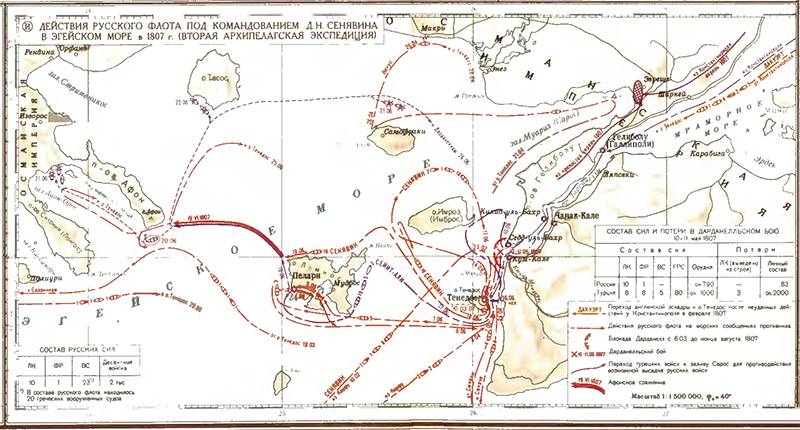
May 7 Turkish fleet raised its anchor and out of the Sea of Marmara. It consisted of 8 battleships, 6 frigates, 4 sloops, 1 brig and about 50 rowing fleet ships. He headed the fleet directly Kapudan Pasha Seid-Ali himself. In general, the Ottomans decided on such a bold enterprise for a long time: as early as April 17, Seid-Ali from the Sea of Marmara entered the Dardanelles, as if sneaking up to Senyavin. While the Turks were thus approaching the Russian squadron, Greig ended his cruise and literally on the eve of the enemy's attack, he joined the squadron. In 6 h. 30 min. the enemy fleet departed from the Dardanelles. Seeing this, Senyavin, in order to give the bait an even more appetizing and, most importantly, realistic and tempting look, ordered him to depart from Tenedos to Imbros Island. Firstly, Seid-Ali could not disregard Tenedos, this painful thorn that he was to extract. On the island was located a small garrison. Secondly, Senyavin sought to lure the Turks away from the entrance to the strait with its powerful batteries, get off Seyid-Ali to the wind and attack. Taking the battle in the roads of Tenedos due to the large number of rowing ships from the enemy was considered unacceptable.
Taking advantage of Senyavin’s departure, the Turks on May 8 tried to land on Tenedos twice, but both times were dropped into the sea. The landing operation was led by French officers. Because of the emerging calm, the Russian squadron did not manage to go around Imbros and thereby cut off Seid-Ali from Dardanelles. May 9 Senyavin returned to Tenedos, since leaving the garrison for a longer period was dangerous.
In the morning of May 10, the Russian squadron prepared for battle with the enemy. Around the 13 hours of the day a fresh southwest wind blew out, and at 14 hours Senyavin's ships were already lined up in a battle. Seeing the preparations of his persistent opponent, Seyid-Ali ordered to hastily lift the anchors - the mood of Kapudan-Pasha this morning was clearly far from militant. The Turkish fleet began to withdraw to the Dardanelles saving for him. The flagship of the Senyavin of the battleship "Tverdiy" raised a signal to carry all possible sails and attack the enemy. However, the element said its weighty word at this moment. The wind ceased, and a pause began in the barely beginning persecution. Only in 18 h. The wind resumed, which, however, took advantage of the Turks. In 18 h. 15 min. the battleship Raphael and Retvizan opened fire, and soon both fleets were drawn into battle. Since the formation of the ships of the opposing sides was far from order, the battle soon turned into a dump. Russian ships hit the enemy with volleys from both sides. The distance between the combatants was very small - repeatedly the opponents hit each other with a spar.
Senyavin on "Solid" passed under the stern of the enemy junior flagship Bekir Bey and headed straight for the ship Seid-Ali. “Solid” brought down several volleys on the Turkish battleship, causing significant damage to it. At some point, the opposing squadrons entered the zone of the coastal batteries located on the Dardanelles. The Turkish coastal artillery began to support its fleet in disarray. With the onset of darkness, the battle began to subside - part of the Russian ships turned out to be referred by the current to the enemy shore. "Solid" generally found himself in 200 meters from the coast. Senyavin ordered to completely darken the ships, lower the boats and begin towing. At around 1:00 in the morning, the Turks saw that the Russians were moving away from the coast, and opened heavy fire, but in the dark it turned out to be ineffective. Senyavin emerged from dangerous proximity with coastal forts and anchored at the entrance to the strait.
At dawn, the Russians saw three Turkish ships, which, being badly damaged, after the battle, huddled to the Asian coast. And the rowing flotilla carried out an emergency evacuation of wounded animals, of which one was the vice-admiral. Senyavin immediately ordered Greig to attack the enemy with four battleships and one of the best frigates of the squadron, the Venus. Seeing the approaching Russians, Turkish rowing boats stopped towing and hurried to retreat. Taking advantage of the tailwind, the least damaged battleship slipped away into the Dardanelles, and the other two ran aground near the coastal batteries. The beginning of calm caused Greig to stop the pursuit and retreat to the main forces.
The Dardanelles battle is over. The losses of the Russians were insignificant, although some ships were damaged, mainly from coastal batteries. Also among the dead was captain-commander Ignatiev, the commander of the battleship "Strong", and two sailors, three officers wounded, a midshipman and lower-ranking 50. Captain Commander Ignatiev was solemnly buried in Tenedos. The losses of the Turks from the Russian fire were much more serious and reached almost a thousand people. Most of the enemy ships were badly damaged and needed long maintenance. Estimated by some modern historians as “indecisive” or “unconvincing”, the Dardanelles battle is an undoubted victory of Senyavin. The Turks did not succeed in accomplishing the task set - the blockade of Istanbul remained an unshakable barrier. The island of Tenedos, despite the persistent inclinations of the Turks, remained in the hands of the Russians. A sortie out of the strait cost the Turkish fleet quite expensive, and the St. Andrew’s flag continued to dominate the waters of the Aegean Sea. Only the weather did not allow to cut off Seid-Ali from the strait and inflict even more significant losses on him. The Turkish commander himself after the battle was in deep sadness, accompanied by a search for the guilty, which, of course, were found in the very near future. One of the junior flagships with the rank of vice-admiral and two ship commanders were called to the flagship before the angry eyes of the fleet commander, where they were strangled after public moral destruction.
Unsuccessful diplomacy and the new Sultan
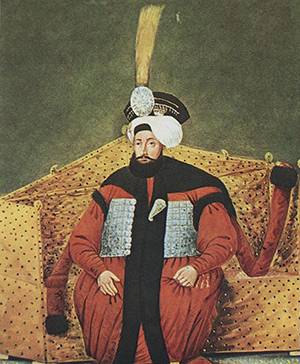
The difficult war with Napoleon forced Alexander to reflect on the advisability of further hostilities with the Ottoman Empire. This minor, in the opinion of the Petersburg top, the war prevented the focus on the main enemy, who until now was considered a short man in a gray walking coat and the famous cocked hat. For the purpose of probing possible points of contact and signing a peace agreement, an official of the Ministry of Foreign Affairs Pozzo di Borgo arrived at Tenedos, whose mission ended in failure.
Russia's diplomatic efforts coincided with unrest in the Turkish capital. The growing food crisis, the unfortunate battle of the fleet were combined with the ongoing reforms in the Ottoman army, which caused a social explosion that had all the features of a military coup. The new sultan Mustafa IV, who came to power in the wake of the army’s anger, generously supported by the people, considered it best to divert public attention from civil unrest by military enterprises. The top of the Ottoman Empire was far from any peace initiatives and was full of not yet vanished militancy. In such conditions in Istanbul they decided that in the present difficult conditions it would be best to give the Russians a new battle. Kapudan Pasha transparently hinted that the young Padishah wanted to begin his reign with a brilliant sea victory, and the commander of the heat of the moment vowed publicly to bring Senyavin's head to Istanbul.
Athos victory of the Russian fleet
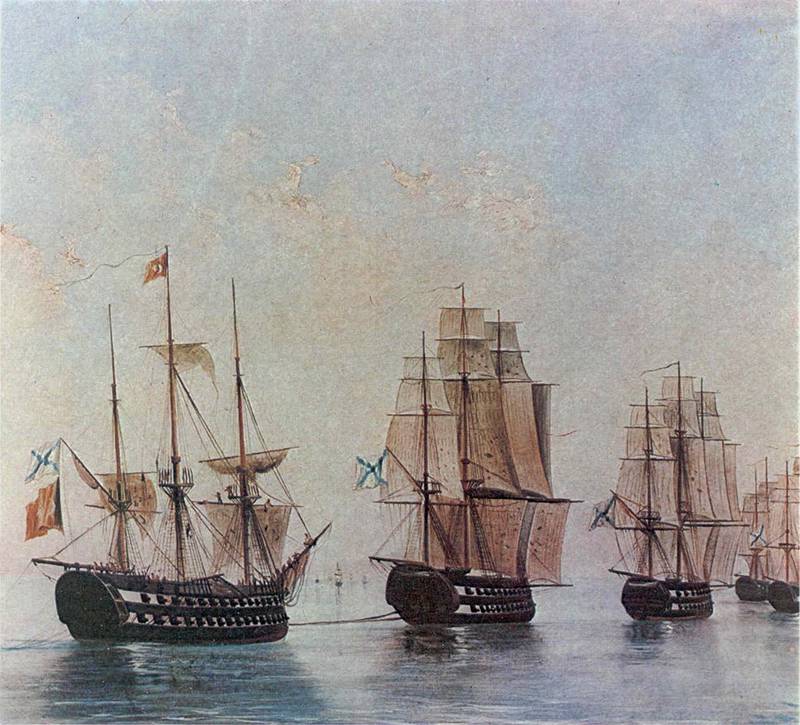
On the morning of June 10. 1807, the Turkish fleet left the Dardanelles in a wake column. Seid-Ali gathered all the combat-ready ships on hand. He had 10 battleships, 6 frigates, 3 sloops, 2 corvettes. Because of the incessant northerly winds, Senyavin could not move away from Tenedos closer to the Turks, and only in the evening of June 12 the weather favored him. The Russian admiral did not leave the desire to cut off the Turks from the Dardanelles, so the squadron, as in the previous battle, did not go directly to the enemy, but began to go around Imbros Island from the west, passing between it and Samothrace Island. A brig "Bogoyavlensk" and two Greek corsairs stood out for the protection of Tenedos. Senyavin thoroughly risked providing the island under his control as a solid bait.
15 Jun Seid-Ali approached Tenedos and was happy to find there only the brig and small vessels there mentioned. When approaching its fleet, Turkish troops from the Anatolian coast began to cross over to the island. The enemy ships supported the landing with fire, and by 17 June there were already about 7 thousand soldiers on the coast. The Russian garrison did not exceed a thousand people under the command of Colonel Padeisky. The Turks under the leadership of French officers undertook several stubborn but ineffectual attacks on the fortress. "Bogoyavlensk" received significant damage, however, its fire, causing damage to several gunboats, trying to take him to the boarding. The fortress also responded intensely. The position of the garrison was serious, but in the morning of June 17 the Russian squadron approached from the north to the scene.
The level of bravery Seid-Ali fell by several divisions and, taking part of the troops on the ships, he raised anchors and departed in a southerly direction. Additional supplies were transferred to the garrison, and the frigate Venus, the Svalbard sloop and a pair of Greek corsairs joined the island’s guard. The main forces rushed after the Turks. For some reason, Seyid-Ali thought that, while being at Lemnos, the Russians left a small garrison there, and the idea of cracking down on him while fleeing Senyavin seemed like a Kapudan Pasha to be very successful. Unfortunately for the Turks, this was the insidious plan of the Russian admiral. Approaching 18 June to Lemnos, he discovered Seyid Ali's ships. Pripertymu to the wall so depressing circumstances, the Turkish commander had to take the battle: throwing verbs into the crowd about the prize head of the Russian admiral is one thing, and to fight him is completely different.
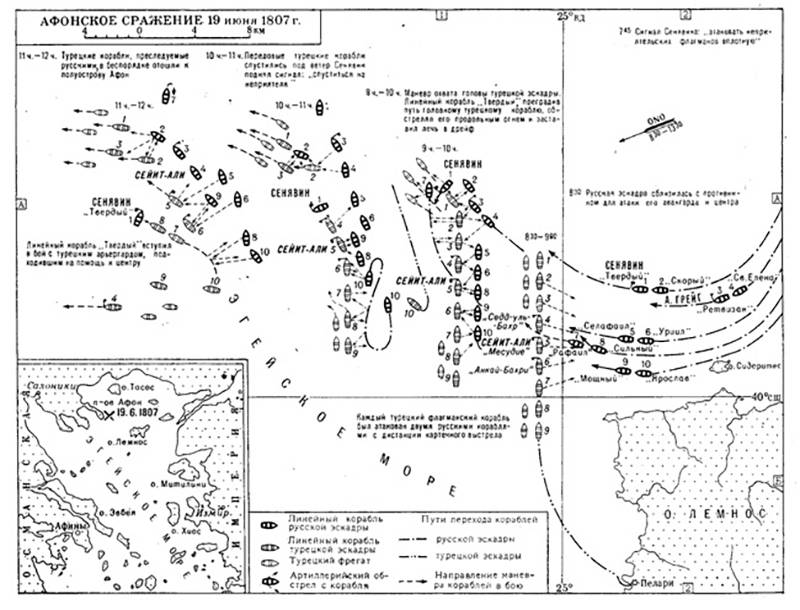
In the battle of Athos, the Russian squadron had 10 battleships (74- and 66-guns). Turkish - 9, of which the 120-gun “Messudiye” was especially distinguished. In addition, Seid-Ali had 6 frigates (of which four were 50-guns), 2 corvettes and 2 brigs. The Turkish side certainly had superiority in artillery: 1196 cannons versus 754 in Russians. The Russian admiral planned to deliver his main attack against enemy flagships, as notified by the appropriate orders of the ship commanders.
The parties lined up in battles, frigates and corvettes were behind the formation of Turkish battleships. Russian ships were approaching the enemy in two columns, in pairs. The convergence began at 7 h. 30 min. 19 June 1807, and in the morning 9 the Turks first opened fire. Senyavin did not respond until he became close with the enemy on the card shot. A fight started. Rafail and Strong, who were in the vanguard, following the admiral's orders, cut through the enemy line, showered the enemy with salvos. "Messudiye" tried to take the "Raphael" to the boarding, but, having received injuries, he withdrew. The commander of the Raphael, captain of the 1 rank, Lukin was killed by the core, but the Russian ship was already on the other side of the Turkish system. The ships of the Kapudan-Pasha fell into two fires, the dump began, when the opponents approached the pistol shot.
Senyavin led the battle on Tverdom. The signalman giving the admiral a telescope severed his hand with a canister, the next moment several nearby sailors were killed. After a couple of hours of intense battle, the Turks could not stand the Russian fire and began to leave the disorganized system, moving to Cape Athos. The heavily damaged and outdated Seyid al-Bahri battleship under the flag of the younger flagship Bekir Bey was surrounded and lowered the flag. A prize team was sent to him from Selafail, to which the captive admiral and all the officers were taken. On the "Seid-el-Bahri" were captured British prisoners from the ill-fated lifeboat, sent by Dacworth for supplies, subsequently captured by the Turks and abandoned by their own to the mercy of fate. The British were used for their intended purpose - as sailors.
On the morning of June 20, another battleship and two frigates heavily damaged were found at Cape Afon. Unable to defend themselves, the Turkish crews fled to the coast, and the ships were blown up by them. Two more frigates sank near the island of Samothrace from the damage sustained in the Athos battle. Thassos was stranded near the island and a battleship and a frigate were burned. In total, the promise to present the head of Senyavin to the sultan cost the fleet of the Ottoman Empire in the 3 battleship and the 5 frigates. The losses in personnel were also significant: only the flagship Messudie had 500 dead and wounded.
In Russian, four battleships had damage, the loss in people was 4 officer and 77 sailors. 5 officers and 150 lower ranks were injured. Senyavin refused the seductive opportunity to completely finish off the enemy fleet and moved to help the exhausted garrison of Tenedos, which from 18 to 25 in June was subjected to frequent attacks by the enemy. On June 25, a Russian squadron surrounded the island, and the Turkish airborne corps was asked to leave Tenedos. The next day this offer was reasonably accepted, and the Turks cleared the Anatolian coast.
The victory in the battle of Athos opened up new opportunities for the Russian forces in the Aegean Sea, but European circumstances intervened in the course of this war. In the battle that took place on the eve, Friedlandsky, Napoleon defeated the army of Bennigsen, and the meeting of the emperors on a large raft in the middle of the Nemunas had already taken place. Senyavin’s return to Tenedos happened on the same day that the Tilsit Peace Treaty was finalized, and a new page opened in the history of Russia.
Information